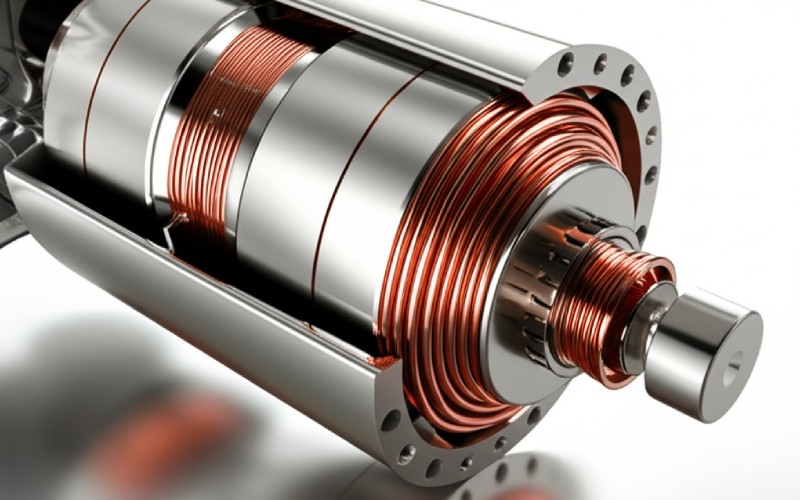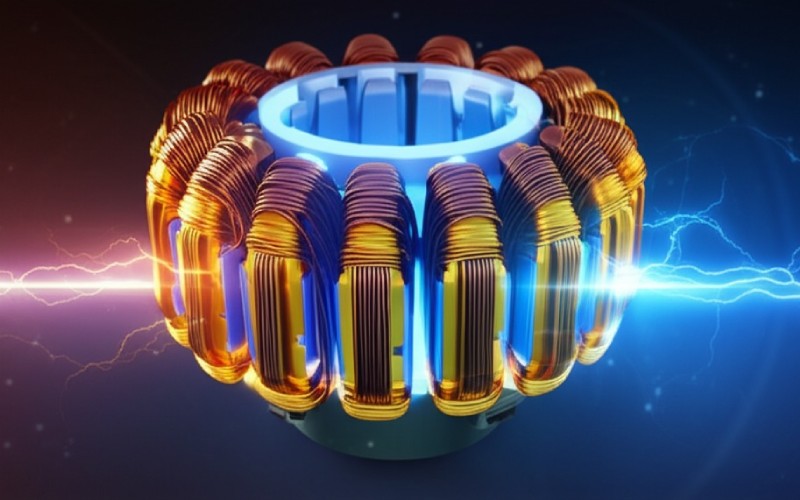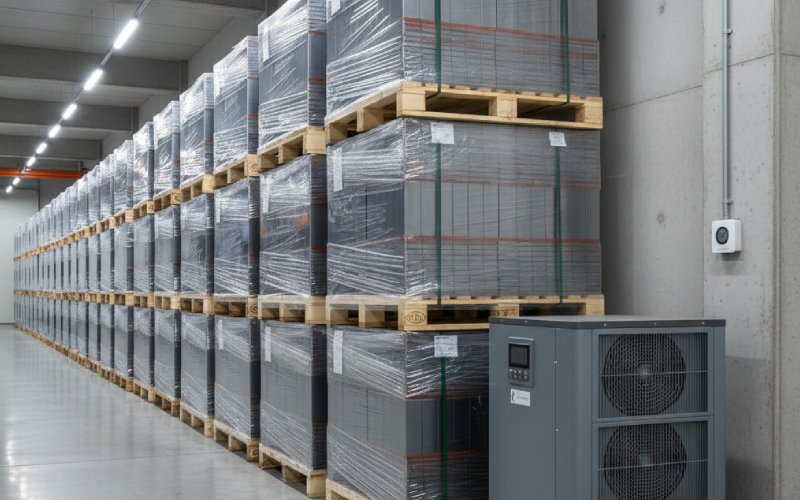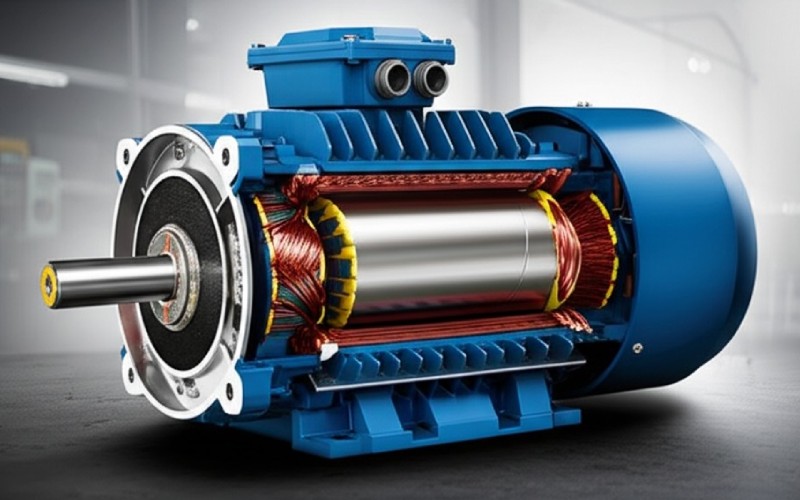Let Sino's Lamination Stacks Empower Your Project!
To speed up your project, you can label Lamination Stacks with details such as tolerance, material, surface finish, whether or not oxidized insulation is required, quantity, and more.
To speed up your project, you can label Lamination Stacks with details such as tolerance, material, surface finish, whether or not oxidized insulation is required, quantity, and more.
Unlock peak motor performance with Sino’s expert lamination coatings. Essential for preventing eddy currents, our coatings boost efficiency, ensure cooler operation, and extend motor lifespan. Gain corrosion resistance, improved punchability, and robust, quieter cores (C3-C6 types). Sino offers tailored solutions and precision application for optimal results. Partner with us for future-ready motors.
The truth is, steel likes to rust, especially when it’s bare and exposed to moisture or certain atmospheric conditions. During the journey from raw steel coil to a finished motor, and even during its operational life, laminations can face corrosive threats. A proper motor lamination coating acts like a durable raincoat, protecting the delicate electrical steel. At Sino, we understand that motors operate in diverse environments – from humid coastal areas where saltwater corrosion is a menace for marine pump motors, to aggressive industrial settings with chemical fumes. We select coatings that offer the right level of protection for the intended scenario, ensuring the core maintains its structural and magnetic integrity for years.
We once had a customer whose agricultural irrigation pump motors were failing prematurely due to corrosion. By switching to lamination stacks from Sino featuring an enhanced corrosion-resistant motor lamination coating, they saw a dramatic increase in motor lifespan, saving them significant replacement and downtime costs.
How do you think those intricate lamination shapes are made? Most often, they’re stamped out of large sheets of electrical steel using high-speed presses and precision dies – a process called punching. Some motor lamination coating types, particularly certain inorganic ones, actually make this process easier and more efficient. They can act as a sort of built-in lubricant between the steel and the stamping die. This “improved punchability” means the dies suffer less wear and tear, leading to longer die life and more consistent part quality.
For us at Sino, this is a double win: it helps our own manufacturing efficiency when producing the lamination stacks, and it ensures our customers receive perfectly formed laminations every time. For a client requiring millions of tiny, complex laminations for miniature servo motors, the right coating meant we could maintain incredibly tight tolerances and high throughput, which was critical to their production schedule.
The “stacking factor” sounds a bit technical, but it’s pretty straightforward. It’s a measure of how much actual steel (the active magnetic material) is packed into a given volume of the motor core, versus how much space is taken up by the coating or tiny air gaps. A well-applied, thin, and uniform motor lamination coating helps those individual laminations nestle together more tightly and evenly. A higher stacking factor is generally better because it means more magnetic material doing its job, which can contribute to a more powerful and efficient motor.
At Sino, our coating processes are designed to achieve optimal thickness control, maximizing this stacking factor without compromising insulation.
For certain demanding scenarios, especially where noise reduction and extreme mechanical robustness are paramount, “self-bonding” motor lamination coating options are a fantastic solution. These are typically C6-type coatings (we’ll get to the types in a moment) that, when the stacked laminations are cured under specific heat and pressure conditions, essentially fuse the entire stack into a single, solid, monolithic block. This dramatically improves the core’s mechanical strength and rigidity. Perhaps even more importantly for many modern uses, like in quiet electric vehicles or high-end home appliances, this bonding significantly reduces audible noise caused by magnetostriction (the slight change in a material’s shape when magnetized).
We at Sino have honed our techniques for applying and curing these self-bonding coatings, delivering incredibly robust and quiet cores for clients in the automotive and premium appliance sectors. The difference in a luxury EV’s cabin silence can, in part, be traced back to details like these.
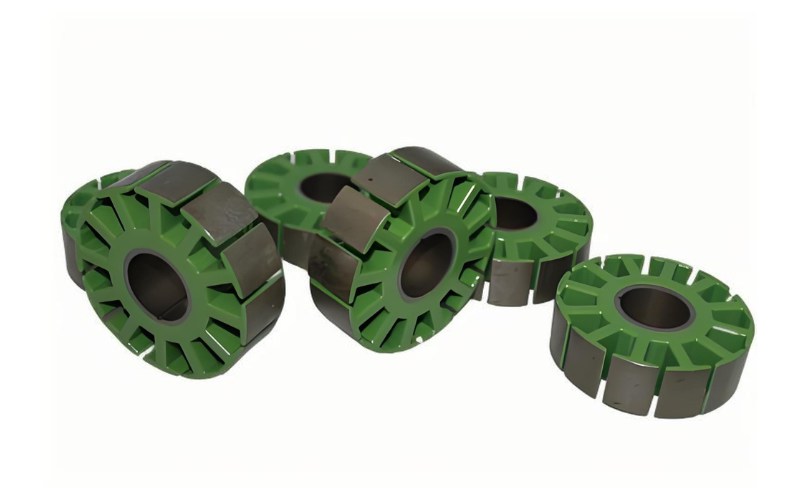
The world of motor lamination coating isn’t a free-for-all; there are industry standards that help classify different types. One of the most recognized is ASTM A976, which categorizes various “C-coatings.” Understanding these helps in selecting the right armor for your motor’s core. Here’s a simplified look, with a Sino perspective:
Coating Class (ASTM A976) | General Type | Key Characteristics & Benefits | Typical Scenarios & Sino’s Insight |
C3 | Organic Enamel/Varnish | Good insulation, generally cost-effective, fair punchability. | Often found in general-purpose motors, smaller transformers. At Sino, we ensure even our C3 coatings provide consistent coverage for reliable basic insulation. |
C4 | Semi-organic | Improved heat resistance & punchability compared to C3. Good balance of performance and cost. | A versatile choice for higher-performance motors, many appliance motors. We often recommend C4 when a step-up in thermal endurance or manufacturing ease is needed. |
C5 | Inorganic | Excellent heat resistance, good insulation, often weldable (important for some core assembly methods). | Ideal for high-temperature motors, demanding industrial transformers, solenoids. Sino sources and applies C5 coatings that can withstand serious heat, crucial for motors in environments like steel mills or enclosed power tools. |
C6 | Self-bonding Organic | Bonds laminations together under heat/pressure, good insulation, creates a very rigid core. | Perfect for noise-sensitive scenarios (EVs, high-end appliances), high-speed motors, or where maximum mechanical strength is required. Sino has specialized curing processes to maximize the bonding effectiveness of C6 coatings. |
Source: Adapted from ASTM A976 Standard Specification for Flat-Rolled, Grain-Oriented, Silicon-Iron, Electrical Steel, Fully Processed Types, and augmented with Sino’s industry experience.
At Sino, we don’t just manufacture lamination stacks; we craft the heart of future-ready motors. And a huge part of that craft lies in our mastery of motor lamination coating. Here’s what sets our capability apart:
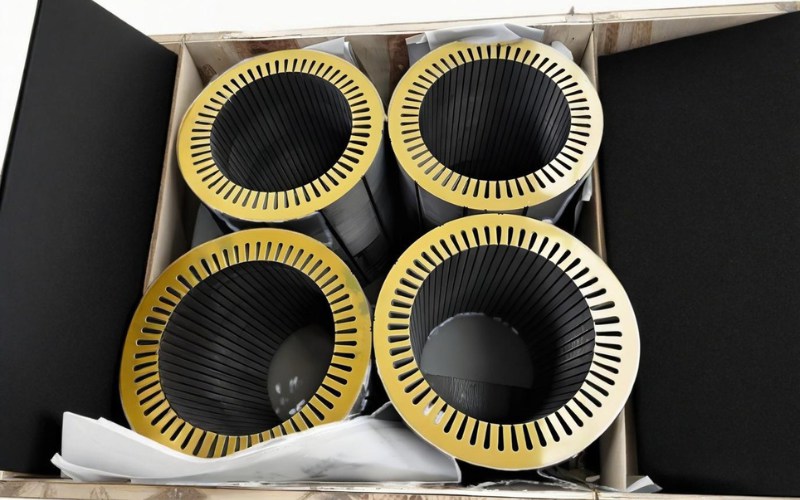
Of course, the real world is full of trade-offs. Cost is always a consideration. A high-performance, heat-resistant C5 or a self-bonding C6 motor lamination coating will naturally be more of an investment than a basic C3 organic coating. The key is finding the sweet spot – the coating that delivers the necessary performance and longevity without over-engineering for the specific scenario.
This is another area where partnering with Sino pays dividends. We can help you analyze the cost-benefit. For example, for a high-volume, cost-sensitive consumer product like a standard box fan motor, a well-applied C3 motor lamination coating might be perfectly adequate and the most economical choice. We won’t try to upsell you on a more expensive coating if it isn’t genuinely needed. Conversely, for a critical aerospace actuator where failure is not an option and thermal stresses are extreme, investing in a premium C5 or specialized coating is a wise decision that we would fully endorse and expertly implement.
We also consider the entire manufacturing ecosystem. Some coatings might be better suited for subsequent processes like welding the stack or over-molding. Our holistic view ensures that the motor lamination coating we recommend integrates seamlessly into your overall production flow.
As electric motors become even more integral to our lives – from electrifying transportation to powering the smart devices in our homes and the automated factories of tomorrow – the demands on every component, including the motor lamination coating, will only intensify. We foresee trends like:
Sino is actively engaged in understanding and preparing for these future needs. Our commitment to research, development, and continuous improvement in our motor lamination coating capabilities means we’re ready to help you build the next generation of high-performance electric motors.
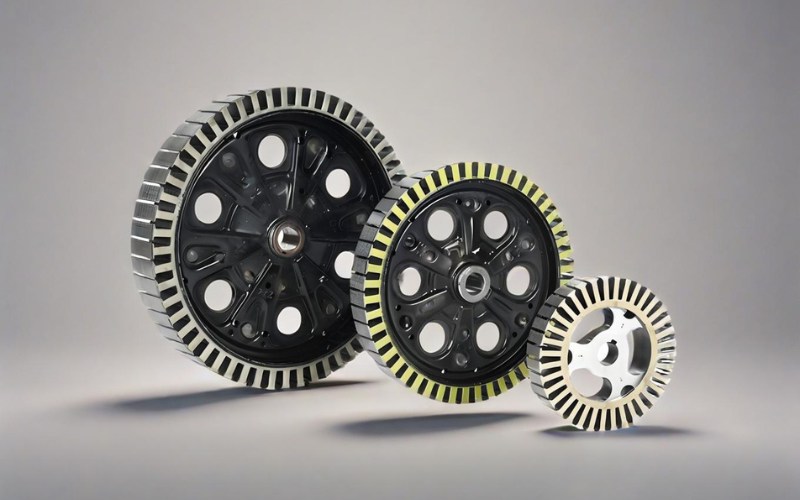
So, when you think about what truly makes an electric motor perform, remember that thin, often invisible, layer of motor lamination coating. It’s a testament to how precision engineering at a microscopic level can yield macroscopic benefits in efficiency, reliability, and longevity.
At Sino, we’ve built our reputation on manufacturing world-class lamination stacks. Our expertise in selecting, applying, and quality-controlling motor lamination coating is a cornerstone of that reputation. We’re not just coating steel; we’re engineering solutions that empower your motors to run better, last longer, and contribute to a more efficient world.
If you’re designing a new motor, looking to improve an existing one, or simply want to understand how the right motor lamination coating can elevate your product, we invite you to talk to us. Let Sino be your partner in unlocking the full potential of your electric motor designs. We’re confident that our capability and dedication will speak for themselves.
To speed up your project, you can label Lamination Stacks with details such as tolerance, material, surface finish, whether or not oxidized insulation is required, quantity, and more.

